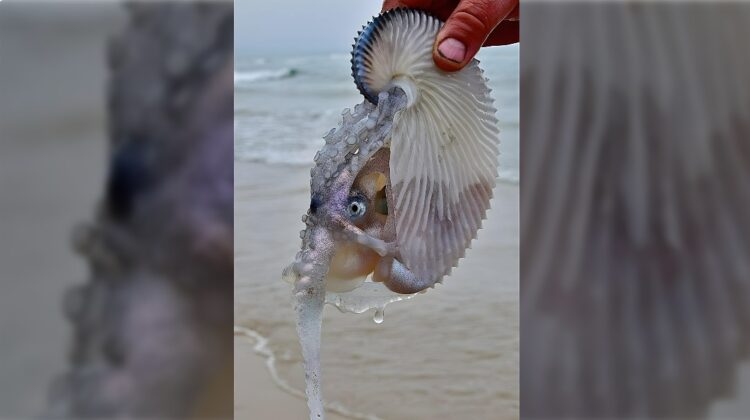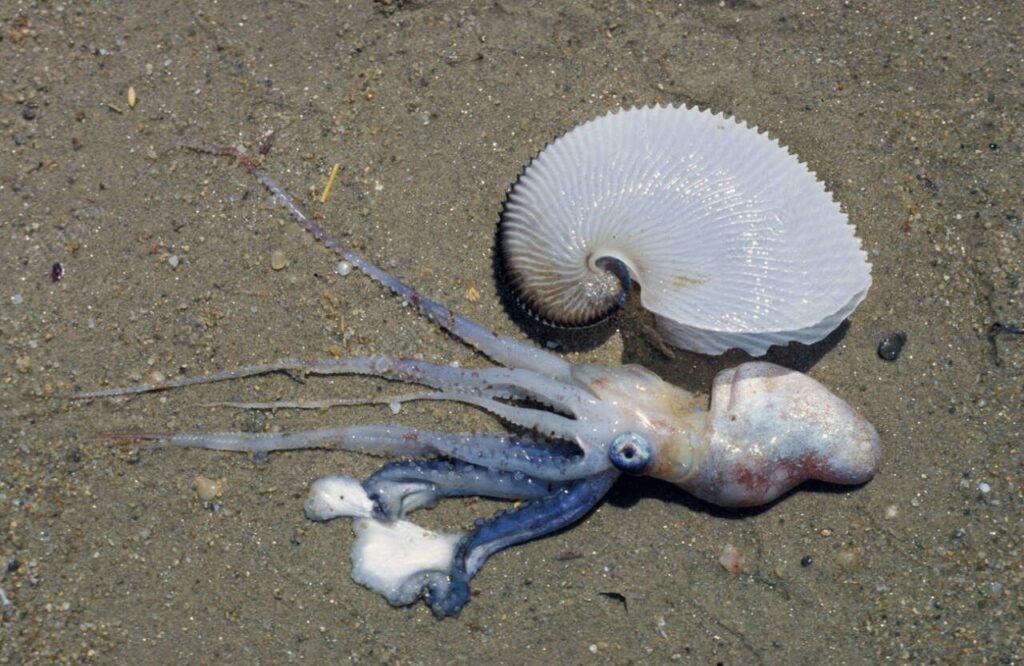
Have you ever heard of an octopus that builds its own shell? Meet the Argonaut, a truly extraordinary marine creature often mistaken for a nautilus due to its delicate, paper-thin shell. This fascinating cephalopod has captivated scientists and nature enthusiasts alike with its unique biology and behavior.
The Enigmatic Argonaut

The Argonaut, also known as the paper nautilus, is a species of octopus renowned for its intricate shell. Unlike other octopuses, female Argonauts secrete a paper-thin shell from specialized glands on their arms. This shell serves as a protective chamber for their eggs and a buoyant vessel, allowing them to drift through the open ocean.
A Closer Look
- Unique Shell Formation: The female Argonaut’s shell is not a true shell like that of a snail or clam. Instead, it’s a secretion produced by specialized glands on her arms.
- Sexual Dimorphism: Male Argonauts are significantly smaller than females and lack a shell. They possess a specialized arm, known as a hectocotylus, used for transferring sperm to the female.
- Jellyfish Symbiosis: Argonauts often form symbiotic relationships with jellyfish. They attach themselves to the jellyfish’s bell, using it for transportation and protection. In some cases, they may even consume the jellyfish’s tissues.

The Argonaut’s Role in the Marine Ecosystem
While the Argonaut’s exact ecological role is not fully understood, it is believed to play a significant role in marine food webs. As predators, they feed on small crustaceans and other invertebrates. Their shells also provide habitat for other marine organisms, contributing to biodiversity.

Conservation Concerns
Although the Argonaut is not currently listed as a threatened species, it faces threats from human activities such as pollution, overfishing, and habitat destruction. Protecting marine ecosystems and reducing human impact is crucial for the long-term survival of this unique creature.

The Argonaut octopus is a true marvel of nature, captivating our imagination with its intricate shell and unusual behavior. By understanding and appreciating this fascinating creature, we can inspire future generations to protect our oceans and the diverse life they support.

Leave a Reply